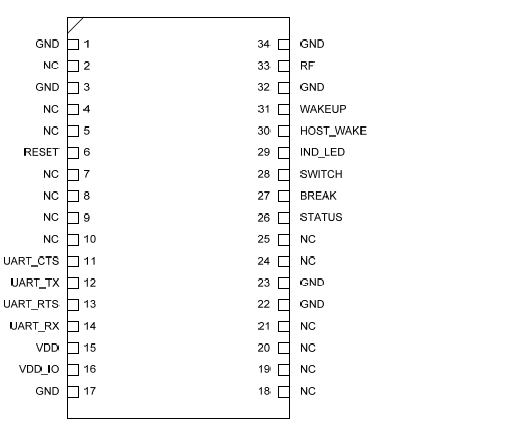Introduction
The Embedded blue is a wireless serial port that can communicate easily with a collection of the standard blue tooth like cell phone, PDA, pcs, etc. For this device, no other external component is required. It can be used as a standalone cable solution that can be controlled by a processor. This profile is the easiest way of connection establishment and this is most popular. In this case, once the connection is established, it is similar to the wired connection. The simple serial UART is used for communication. The main features of the embedded blue are that its easy connection establishment is very simple and its FHSS technology with 2.4GHz frequency ensures high quality, reliability, and strength of interference. Its supply voltage range is 2.2-4.2 V and its current consumption is low. It has an output capacity of 320kbps. This is a fully qualified blue tooth i.e. v2.0+ EDR. It is used instead of RS 232 data cables and is for sending data at a small distance. The important application of embedded blue is in medical equipment, POS systems, Telemetry systems, Industrial Automation, Barcode, and RF-ID scanners, Lighting control, and robotics.
How the chip is fitted
The diagram shown below is the pin-out diagram of the embedded blue eb101 with RF pad pinout. It is a 34 pin IC. (EmbeddedBlue eb101 2009, p.3).

In this pin-out diagram, the pins RESET, STATUS, BRAEK SWITCH, IND_LED, HOST_WAKE, WAKEUP, RF are the radio and control pins. IND_LED and HOST_WAKE are CMOS output and the WAKEUP pin is the CMOS input pin. UART_CTS, UART_TX, UART_RTS, UART_RX are the UART pins (Universal Asynchronous Receiver / Transmitter). Other pins are voltage sources, ground, etc.
Working description
The working of embedded blue is mainly based on two modes i.e. Easy connect and command mode. When the system is operated in the simple cable solution, then it is called easy connect mode. In this mode of operation, there may be a simple cable replacement solution between two web serial or one web serial and other blue tooth dives which are fitted in a mobile, PC, etc. There is no need for another extra configuration. The web serial devices can be controlled by a set of serial commands. SW1 button of the eb501 serial adaptor should be held on and applied power, till the LED turns on. That should remain on until the setup is completed. Then the SW1 of the second adaptor should be held on and apply power on that. When its LED turns on, leave that, and LED should remain on till the setup ends.
In the command mode of connection, there are several functions to provide programmatic control over the function. If there are more functions than the easy connect mode, this mode is used. In this, after the transmission of data, the acknowledgment string is returned. After giving all commands, the eb101 radio is disconnected and changed back to command mode using brake control lines.
Conclusion
The importance of embedded blue is now not in the medical field alone but has spread to various other fields. The use of the devices in the new era is very common. The main applications are medical application, POS system, Telemetry System, Industrial Automation, Barcode, and RF-ID scanners, Lighting control, and robotics. In all these applications, the system embedded blue provides blue tooth connectivity without any knowledge about this Bluetooth. Engineers, educators, etc are using the benefit of this system.
Reference List
EmbeddedBlue eb101: OEM Bluetooth serial module: device pinout diagram 2009, A7 Engineering. Web.